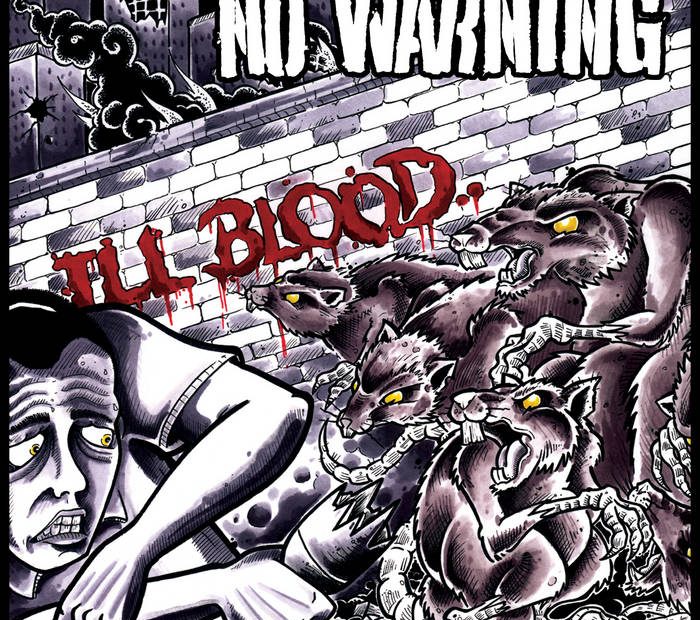
Usually, when I write about hardcore for The Alternative, it highlights what’s happening in hardcore right now. But lately, I’ve been thinking about opening tracks. All of my favorite albums have at least a memorable one. And in hardcore, it’s an essential piece of the puzzle. I will move on if you fail to get my attention right away. There’s far too much music to waste my time on something bad. On a hardcore opener, every note and decision matters. A misstep will be reflected in a poor response live.
There are a couple of different routes you can go with a hardcore opening track. You can use the instrumental course to open up the dancefloor. There are several versions of this, but “7” by Turnstile and “Intro” by King Nine come to mind. You tend to find this example in EPs and demos more than in records. But this option may not work for you; maybe going straight into the meat of the album may work instead. On Ill Blood, No Warning creates an alchemy of these two options, making the best hardcore opening track ever.
While Ill Blood is now considered a classic in the hardcore canon, there had to be a bit of uncertainty heading into it. No Warning was still in the demo and EP phase and put out a self-titled release on the ascendant Bridge Nine Records. There was the possibility that it could fail. Plenty of bands have put out great small releases but struggled with a longer format. It’s why the opening track would prove to be so important in solidifying No Warning’s legacy.
The beginning of “Behind These Walls” is quaint; a lone riff is thrown out, with some feedback for extra measure. It’s the kind of riff that feels as if the guitarist found it by accident. It sounds like somebody noodling on the guitar in their bedroom. Eventually, the bass and drums come towering forward. But the core opening part remains intact and only repeats for the next minute. It’s a simple way to open a record, but it still feels massive. This opening section functions as crowd work to get everyone moving, whether you’re moshing in your bedroom or at a VFW hall. In practice, you’d see numerous stage dives, with bodies splayed everywhere in this opening section. Maybe someone might even split their hand open from the lack of bodies to support their landings.
No Warning could have easily ended the song already. It’s already done its job of keeping the listener’s attention. Instead, it slows down a bit, with some chords ringing out. A lone bass line enters, building up some more tension. Then we finally hear vocalist Ben Cook’s voice enter finally. His vocals are gravelly but are still clear enough to make out all the words he says. You can see the outlines of the melodic stylings he’ll explore with Young Guv later. In “Behind These Walls,” we see Cook taking on the role of a self-help guru. It’s a scribe against complacency and doing nothing with your life (“Our lives are changing/There’s nothing we can do To stop everything from spinning around”). For Cook, all you have is yourself (“At the end of the day, You fuckin’ face it alone”). It makes for a refreshing take compared to some of his more inter-scene politics scribes that come up elsewhere on Ill Blood. Anyone could apply this lesson to their own life.
You would think the song would finally end at the end of Cook’s polemics. There are no more ideas to be expressed in a hardcore song, right? For a moment, you think that No Warning will follow that logic. But then there’s a drum kick to snare hit that lets the listener know that’s not the case. There are still thirty more seconds for dancing to occur. It’s probably my favorite section of the song. Just like the beginning, it’s relatively bare bones in composition. It revolves around the same riff and groove for the entire section. But that’s why it works; hardcore is caveman music. I want it to sound as stupid and ignorant as possible.
Whether you look at it piecemeal or as a whole, “Behind These Walls” is a lesson in constructing a perfect hardcore song. It all is in service of creating a physical response in the listener. The opening is the buildup or inciting incident. Cook shines in the middle, hopefully getting people to sing along with him. To use storytelling terms, this is the rising action, where you hope to keep people engaged. The last 30 seconds are the climax. You finally get some release as the participant and hopefully walk away without any injuries.
